After the Salar de Uyuni and the Sud Lípez, we returned to Sucre to plan our journey to Chile. At this moment, we realized that Bolivia’s highest mountain, the Nevado Sajama volcano, is actually located right on the Chilean border! After some research, we found out that this region is quite unknown and that the Sajama and Lauca parks on either side of the border are among the most beautiful parks in the country.
So here is our practical guide to discovering the Sajama National Park in Bolivia and the Lauca National Park in Chile. On the agenda: llamas, alpacas, and other vicunas peacefully grazing on the Altiplano with some of the highest volcanoes in South America in the background. And all this far from the tourist hustle and bustle of La Paz. Pure bliss! Let’s get started with a guided tour of this incredible region!
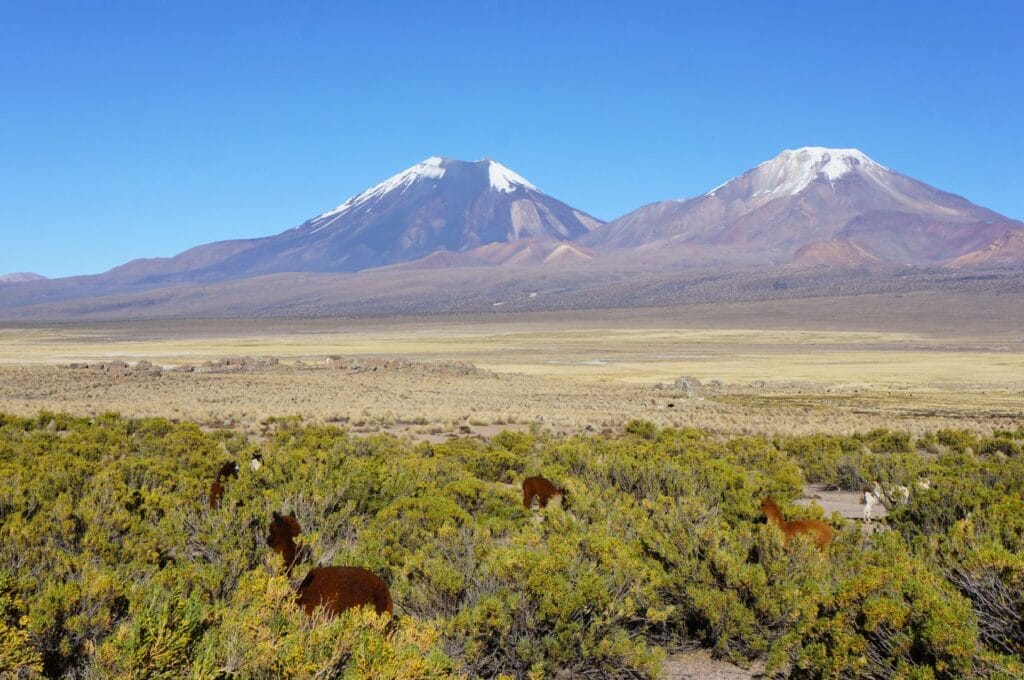
We took this trip in 2014, but the article was completely revised and updated in July 2024. If you see any price changes or have additional information that might be relevant, please feel free to leave us a comment!
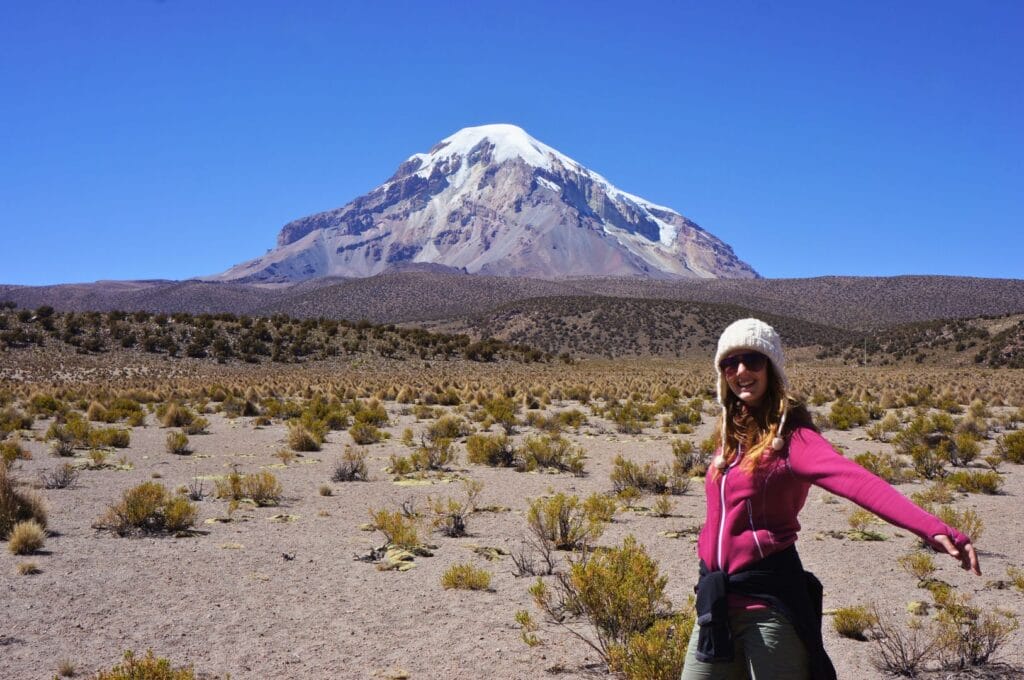
Sajama National Park in Bolivia
Introduction to Sajama Park
The Sajama National Park is not just the Nevado Sajama volcano, which stands at 6,542 meters high. It also includes the twin volcanoes, the Nevados de Payachatas: Parinacota (6,348 meters) and Pomerape (6,282 meters). Besides the volcanic landscape, the park offers magnificent lagoons, hot springs, an abundance of llamas, alpacas, and vicunas, and above all, absolute tranquility.
In short, if you love nature, hiking, and climbing, you will be absolutely delighted in this park! The small Andean village of Sajama – with perhaps 300 inhabitants – will serve as your base for visiting the surroundings. There isn’t much to see in the village itself, but the pre-Hispanic era buildings around the main square are worth a look. Tomarapi is another village to the north of the park but is less known than Sajama and is further from the main attractions.
You will find simple accommodations and a few small shops with the bare essentials. You won’t be able to buy fruits and vegetables, for example, but rather snacks, sandwiches and drinks. You’ll also find that alpaca wool crafts are on the rise. Needless to say, there are no ATMs there, so bring enough cash. The last ATM on the route is in Patacamaya.
One practical point: the entrance to Sajama National Park costs 100 bolivianos, payable upon arrival in the village.
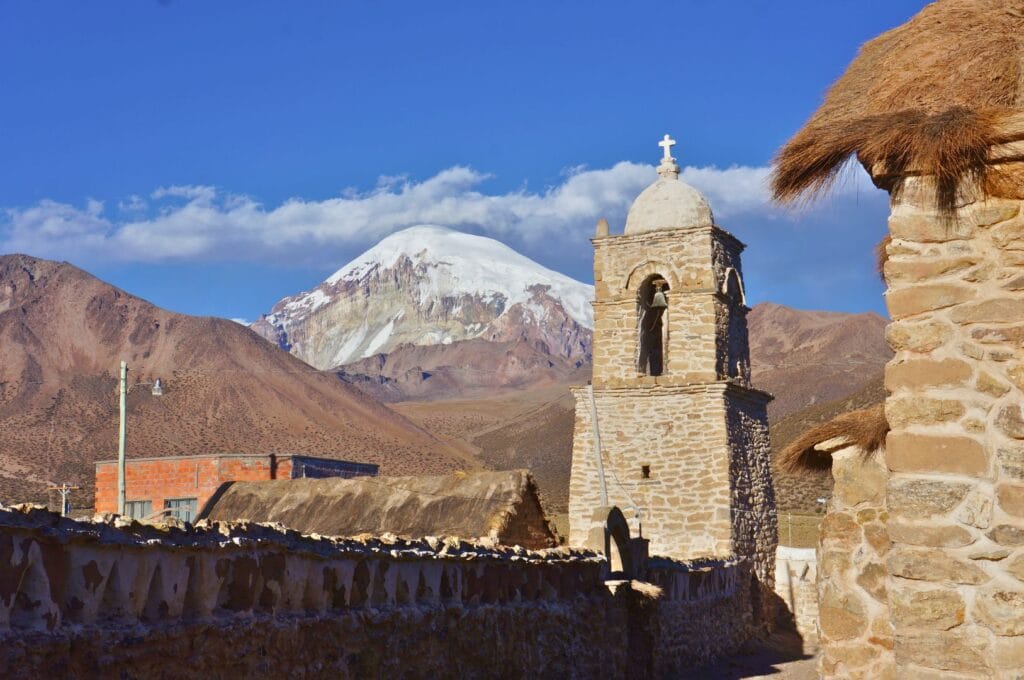
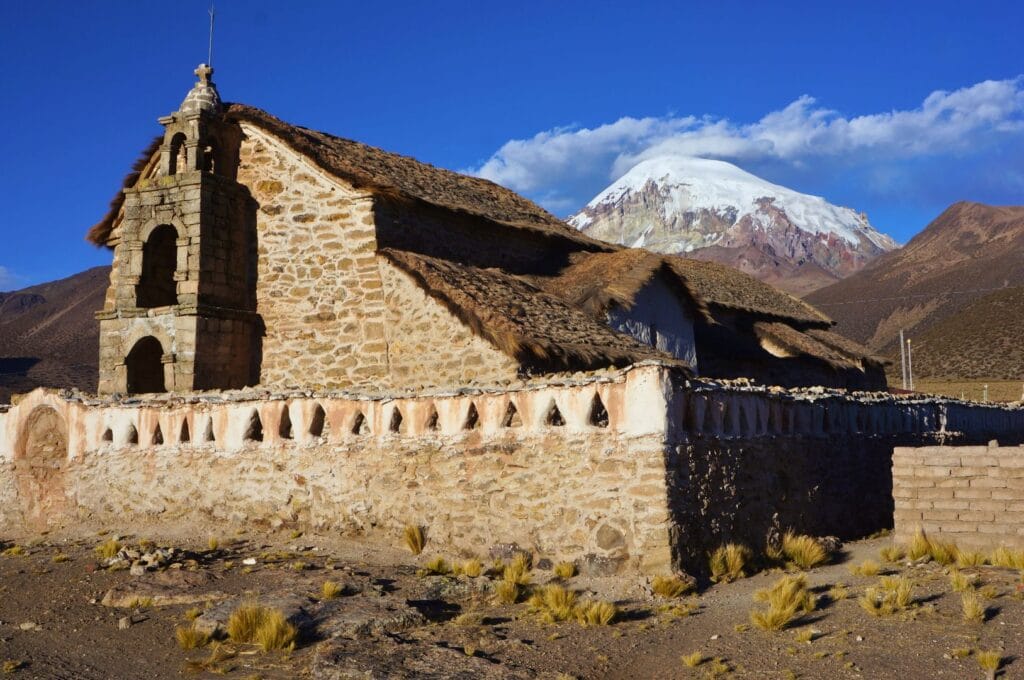
Getting to Sajama
Fortunately, the paved international road between La Paz in Bolivia and Arica in Chile passes right next to the park, greatly facilitating access.
From La Paz
To get directly to the village of Sajama, the easiest way is to depart from the main terminal in La Paz to Oruro and stop at the small village of Patacamaya. Ask the bus driver to drop you off there. From Patacamaya, a direct minibus leaves every day for the village of Sajama as soon as it is full – between 11 a.m. and 2 p.m. – for a 3-hour drive. The ticket costs 25 bolivianos.
From Sucre
From Sucre, you don’t have to pass through Patacamaya to get to Sajama. Another option is to first take a night bus from Sucre to Oruro, then a minivan from Oruro to Tambo Quemado, a small village on the border. This village is 12 km from Sajama, and you can find taxis or cars to take you there.
Info: To leave Sajama, a collectivo departs daily at 6 a.m. (5 a.m. on Sundays) for Patacamaya. Don’t hesitate to hurry to get a seat; Bolivians won’t be generous even if you arrived before them!
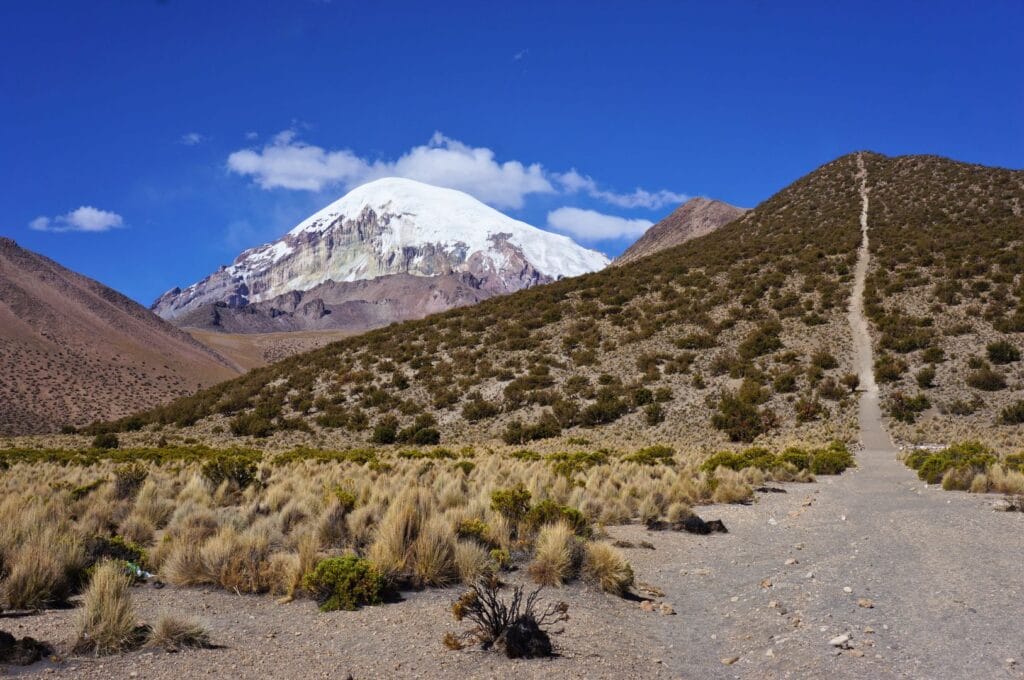
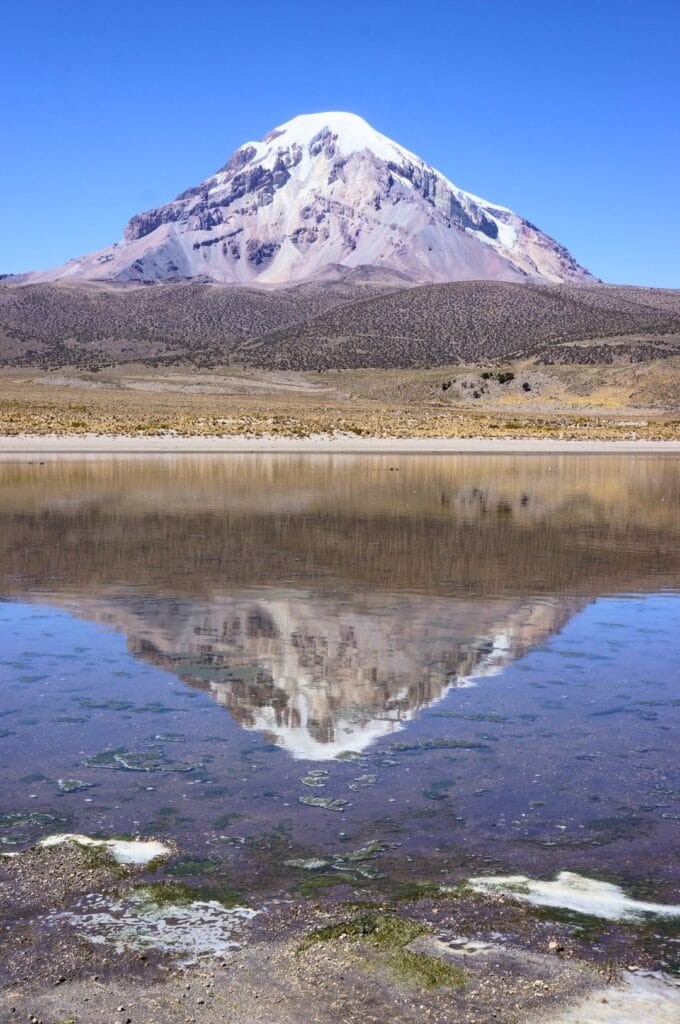
This article contains affiliate links to partner sites. When you use our links to book accommodation, a car, or an activity, you don’t pay anything extra, but we get a small commission. This helps us to offer you free, independent, and ad-free content. Thank you for your support!
Accommodation in Sajama National Park
There are several small, very simple hostels in the village, and we recommend Hospedaje Pachamama, located at the southern entrance of Sajama next to the Oasis and Sajama hostels. We stayed for 4 nights, and more than a hostel, it is actually a room in the inner courtyard of the family’s home. The mamita, Doña Theodora, who runs the place, is a gem! Plus, she cooks very well, which is clearly a plus in a small village where there’s not much to buy. In fact, all the accommodations typically offer meals. If there is no more room with our mamita, head to Mario and Ana (Posada Panatura Mario Y Ana) 100 meters away. Expect to pay 50 bolivianos per night and 25 bolivianos per meal. By the way, it was with Mario that I went hiking on the slopes of the Parinacota volcano!
Things to do in Sajama National Park
To give you an idea of everything there is to do around Sajama village, here is a map of the national park.
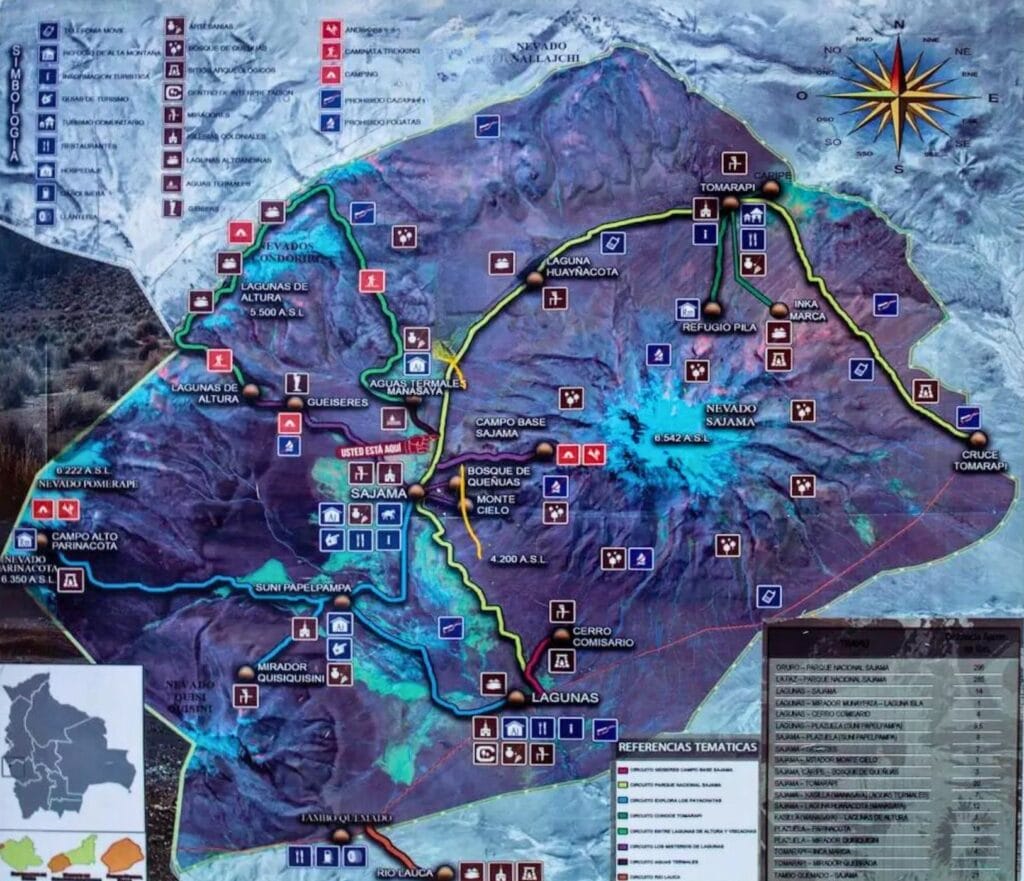
See the Laguna Huayñacota
The beautiful Laguna Huayñacota is 12 km north of the village of Sajama. It takes about 2 hours 30 minutes to 3 hours of walking to reach it, continuing on the track that arrives at the village. Impossible to miss! Additionally, the trail is easy because the elevation gain is almost non-existent. Honestly, this place is breathtaking. The majestic Nevado Sajama volcano is reflected in the water while flamingos and other vicunas drink peacefully there. Just magical! A little panorama will give you a better idea of the beauty of the place.

Some accommodations offer to make the trip by pick-up; inquire to possibly share the costs with other travelers.
Dip in the Manasaya Hot Springs
Halfway between the Laguna Huayñacota and the village of Sajama, a 1.5-hour walk, the Manasaya hot springs are pure bliss. You will soak in very hot water (according to Fabienne, it’s not easy to enter) with an incredible view of the Sajama volcano.
Tip: If you stay with our mamita Doña Theodora at Hospedaje Pachamama, you can bathe for free in her own thermal baths. Otherwise, you will have to pay 30 bolivianos for the bath, including a towel and shower. Also, know that it is possible to find “wild” thermal springs by walking a bit further.
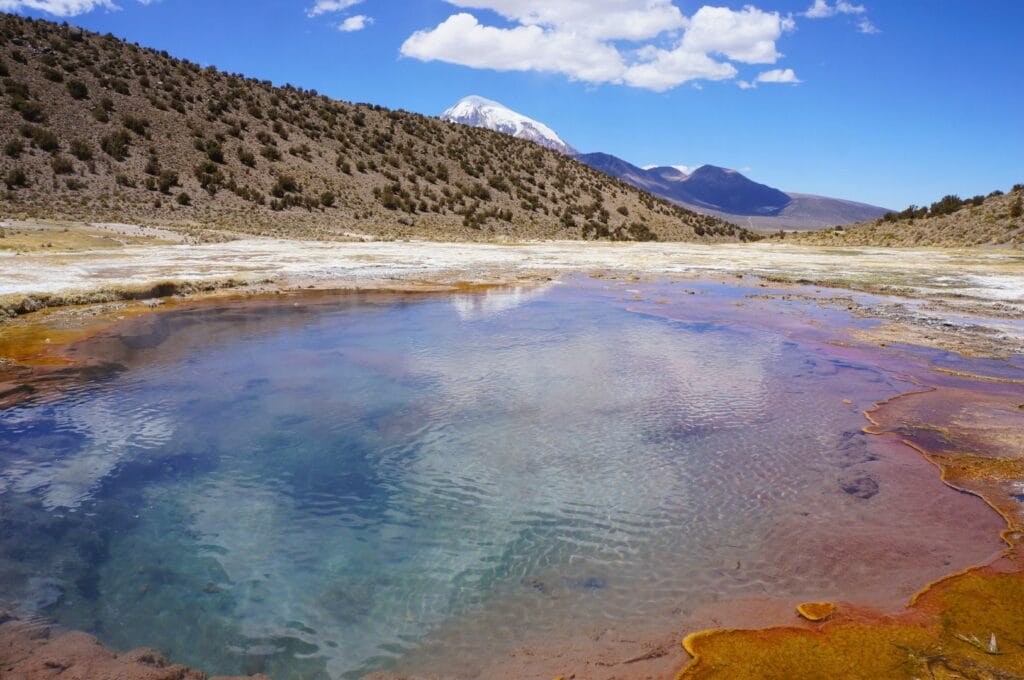
Admire the Juchusuma Geysers
The Juchusuma geysers are 8 km from the village of Sajama. To get there, follow the track heading towards the Pomerape volcano, which starts behind the church west of the village. It takes about 2 hours to reach them. Along the way, you will likely encounter about 1,000 llamas/alpacas and some wild vicunas. Not a bad walk! If you’re lucky, you’ll see the water erupt from the geysers! When we arrived, we saw a very muddy geyser explode from afar, and then… nothing for 2 hours! So a bit of luck helps.
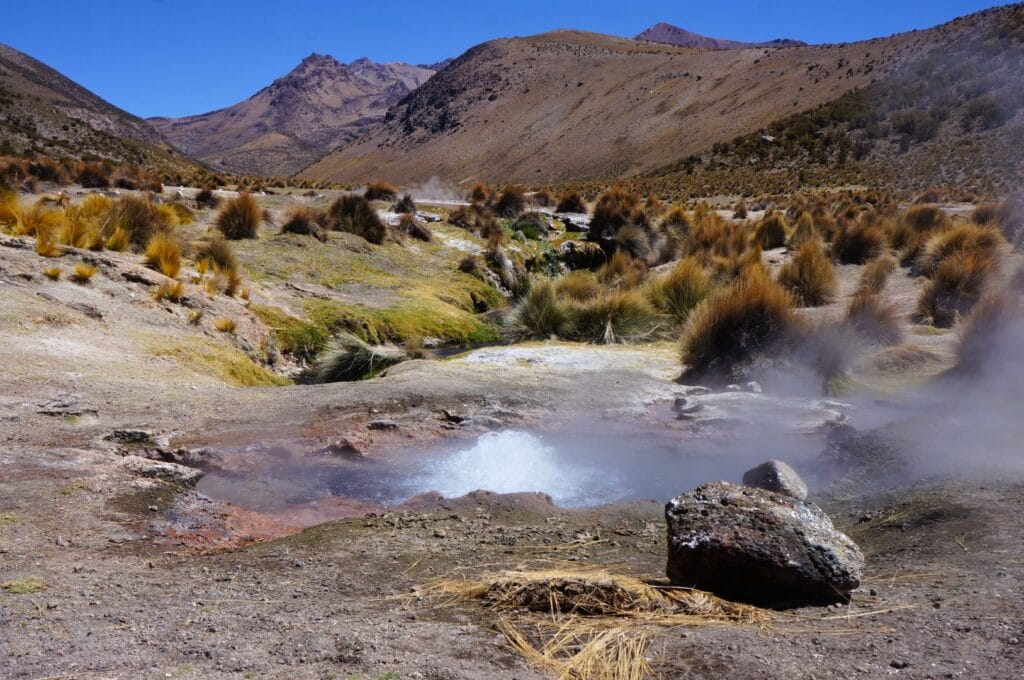
Walk to the Lagunas Altas
These high-altitude lagoons (Lagunas de Altura) are beyond the Juchusuma geysers. To access them, a 33 km hike awaits you, taking about 10 hours of walking. It is often done in 2 days or even 1 day if you start early from the village of Sajama. You can also do it in 1 day if a 4×4 takes you to the geysers. This option allows you to save some energy to reach the Altas Lagoons.
We heard it was a very nice hike to discover the 3 lagoons Casiri Macho, Sora Pata, and Chiar Kkota! However, have good camping gear since you will be at almost 5,000 meters altitude. Freezing temperatures ahead, around -10/-15 °C! Download the trail here; you can turn around at the next lagoon or do the loop that passes through the Manasaya hot springs.
Access the Queñuas Forest
This is not the most spectacular thing in Sajama Park, but the Queñuas forest is the reason the national park was created. Its initial objective was to protect this tree as well as the ecosystems and fauna of this semi-arid Altiplano region. Since the Queñuas forest grows between 4,500 and 5,200 meters, it is the highest forest in the world! To access it, head 1.5 km north of Sajama.
Climb to the Montecielo viewpoint
Impossible to miss the path that goes straight east from the village towards the Sajama. In fact, you will reach the top of Quewiña where the Montecielo viewpoint (or Monte Cielo as you will see it spelled) is located. You will reach the viewpoint in less than an hour and have a beautiful panoramic view of the area. One option is to combine this viewpoint with the Queñas forest and then join the Manasaya hot springs.
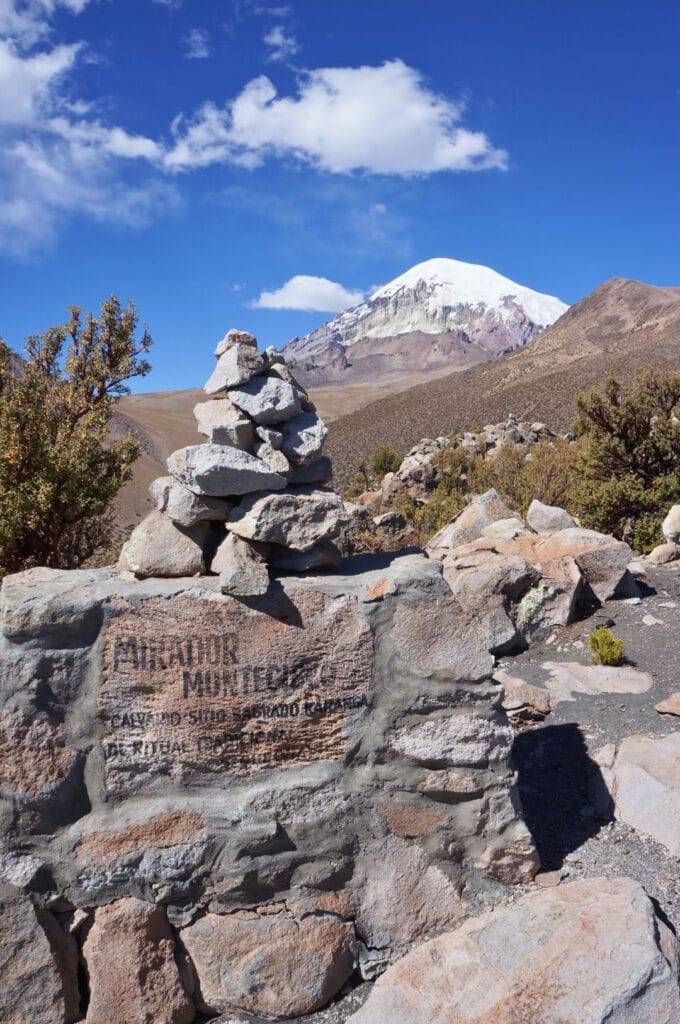
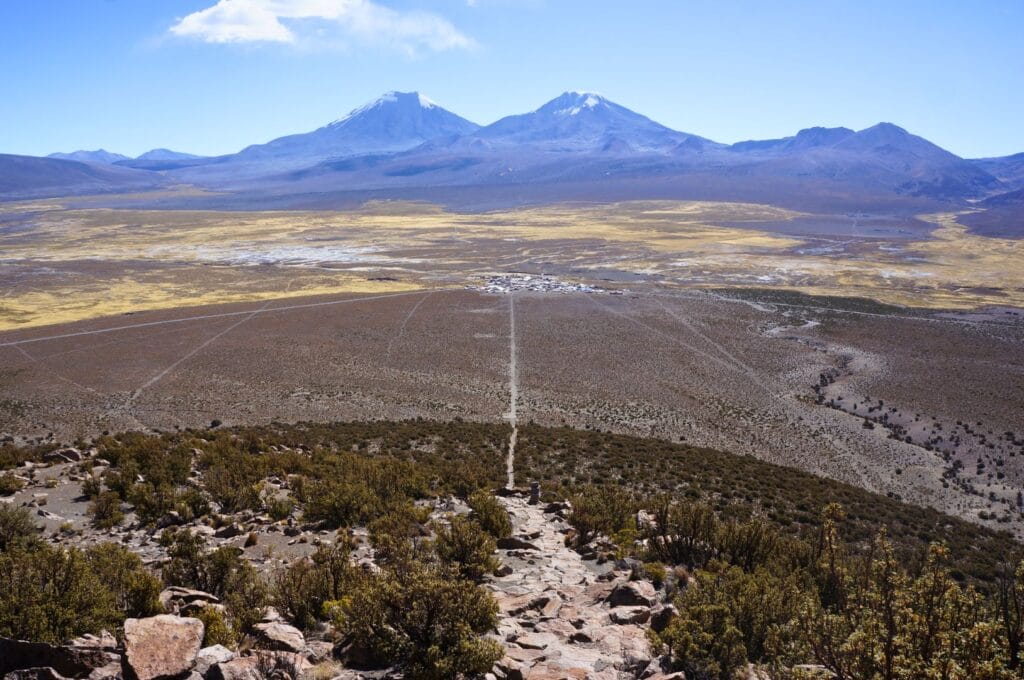
Climb the Volcanoes in Sajama Park
This is the main reason tourists come to the Sajama National Park. You can climb the Sajama (6,548 meters), Parinacota (6,348 meters), and Pomerape (6,282 meters) volcanoes. But note that there is no equipment in the village of Sajama, though there are guides available. Only agencies in La Paz have the necessary equipment (crampons, ice axes, harnesses) to climb the more technical Sajama and Pomerape. Guess why I chose to climb Parinacota 😉.
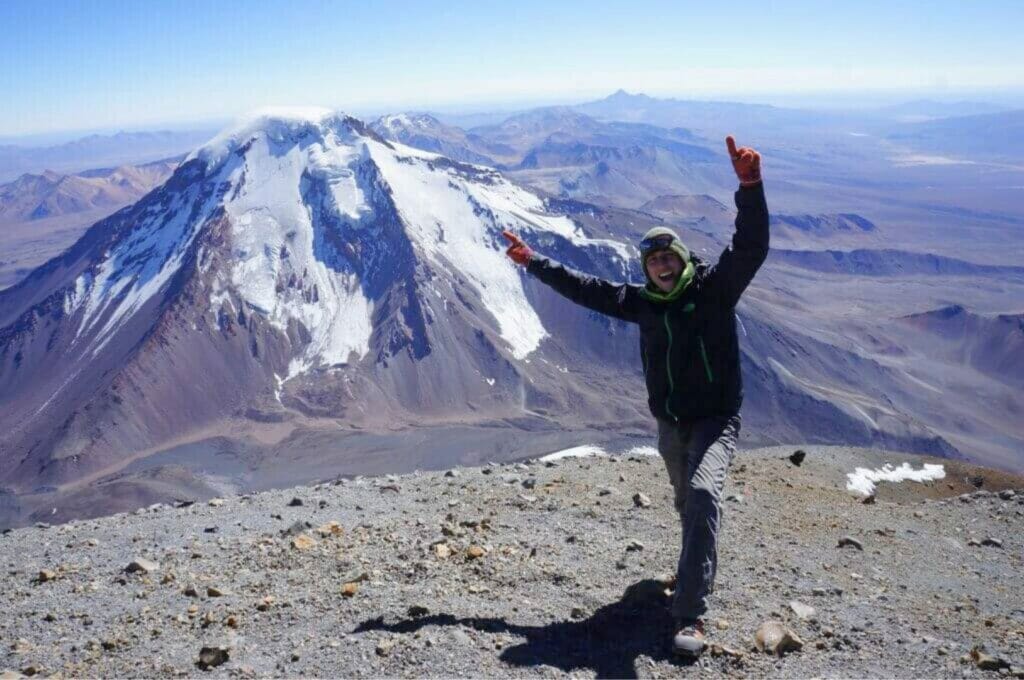
Lauca National Park in Chile
After Sajama National Park on the Bolivian side, we cross to the other side of the border: heading to its Chilean counterpart, Lauca National Park. Bordered to the south by the Las Vicuñas National Reserve and the Salar de Surire, it is located east of Arica city, in the far north of Chile. These three spaces forms a UNESCO-recognized biosphere reserve.
The park’s main attraction is Lake Chungará, which serves as a refuge for hundreds of bird and mammal species and offers a spectacular panorama with the Parinacota volcano in the background. The flora is also quite exceptional, as it thrives in the extreme conditions of the Andean plateau. In the lush and green wetlands known as bofedales, alpacas, llamas, and vicunas come to graze.
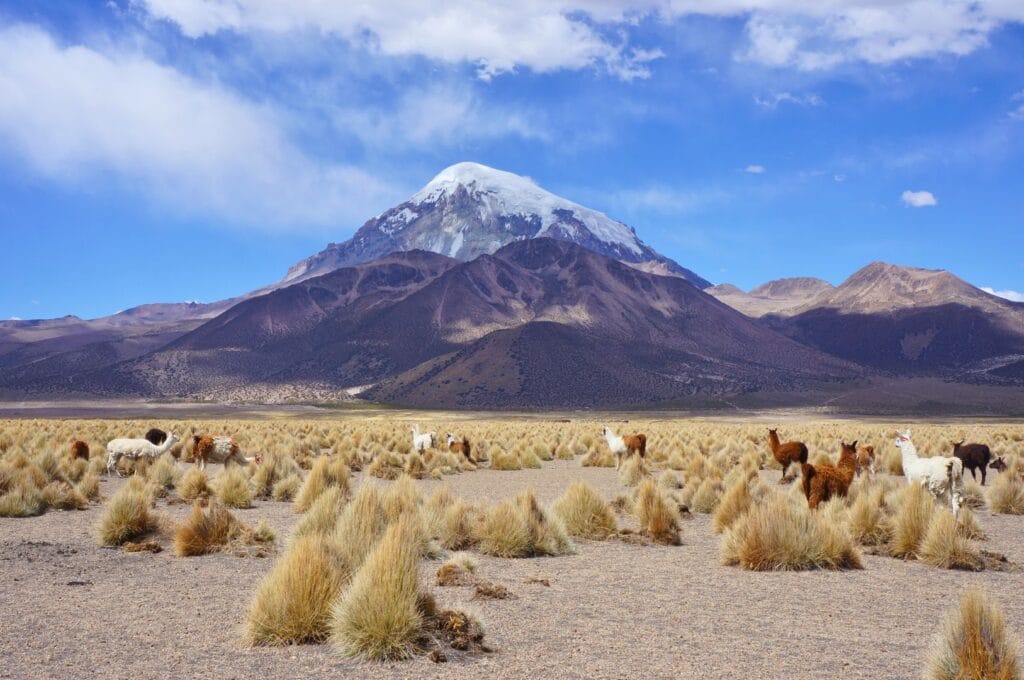
You’ll understand why it’s one of Chile’s natural gems. Being so close to Sajama, it would be a shame not to visit and continue marveling at this Altiplano region. (Technically, Lauca National Park belongs to the famous and vast Atacama Desert, but many include it in the Andean Altiplano instead.)
Getting to Lauca Park
From Sajama
To reach Lauca from Sajama, take the only bus at 6 a.m. that will drop you on the international paved road near the hamlet of Laguna. From there, shuttle buses run to the village of Tambo where you will be stranded until around 8 a.m. There, ask the bus or truck drivers if they can drop you off either at the Lauca refuge (where you can only camp by the lagoon) or at the village of Putre to find hotels.
In the meantime, you’ll obviously need to cross the Chilean border. Note that all fresh foods such as vegetables, meat, and cheese are prohibited!
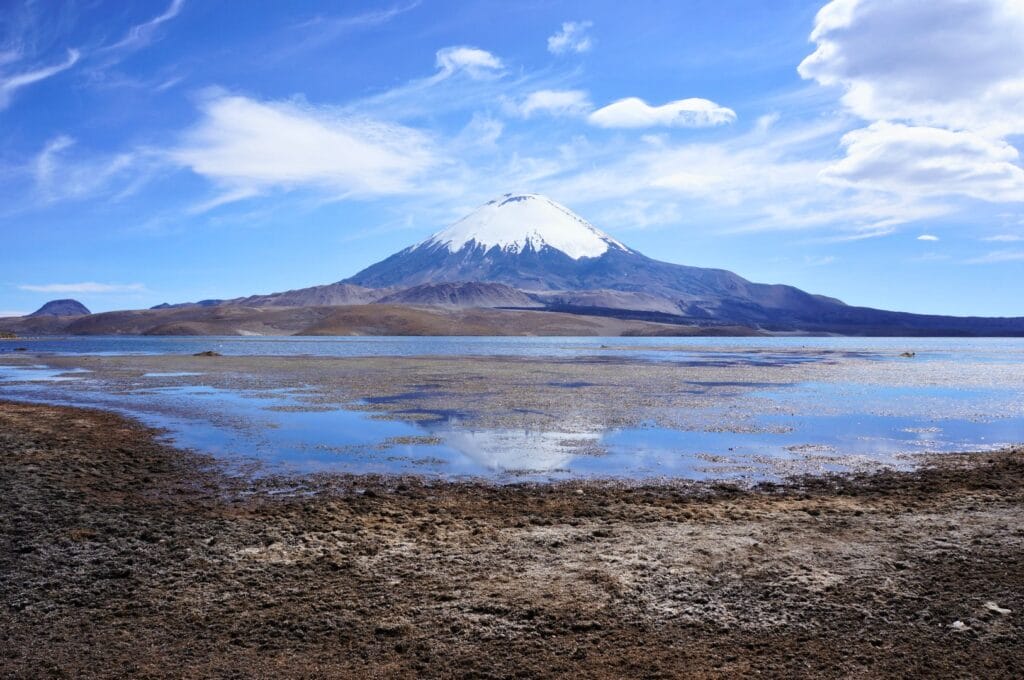
Depuis Arica et Putre
To reach Lauca from Arica or Putre, the only bus company that makes the trip is La Paloma. The bus departs at 6:50 a.m. for a 3-hour journey, and the ticket costs 7,500 Chilean pesos (around 7 euros).
Additionally, there are organized tours of 1, 2, or 3 days that stop at the main attractions. However, be cautious about tours departing from Arica. You’ll ascend 4,500 meters in 3.5 hours! So if you haven’t acclimatized to the altitude for several days, acute mountain sickness might hit you hard. It’s better to stay a few days in Putre to get used to the altitude and then explore Lauca National Park from there.
Another option is to rent a car from Arica (or Iquique) for a 3-4 day road trip to Lauca National Park and the Surire salt flats. In this case, bring a 20-liter gasoline can, as fuel stations are rare in this desert region. It’s a 2.5-hour drive from Arica to Putre, 1 hour from Putre to Ajata by Lake Chungará, and 2.5 hours from Putre to the Salt Flat. Prefer a 4×2 or 4×4 vehicle, especially if you plan to go to the Salar as the road has fords when it rains. Otherwise, hitchhiking is easily doable in the region as there’s only one road and many trucks pass through.
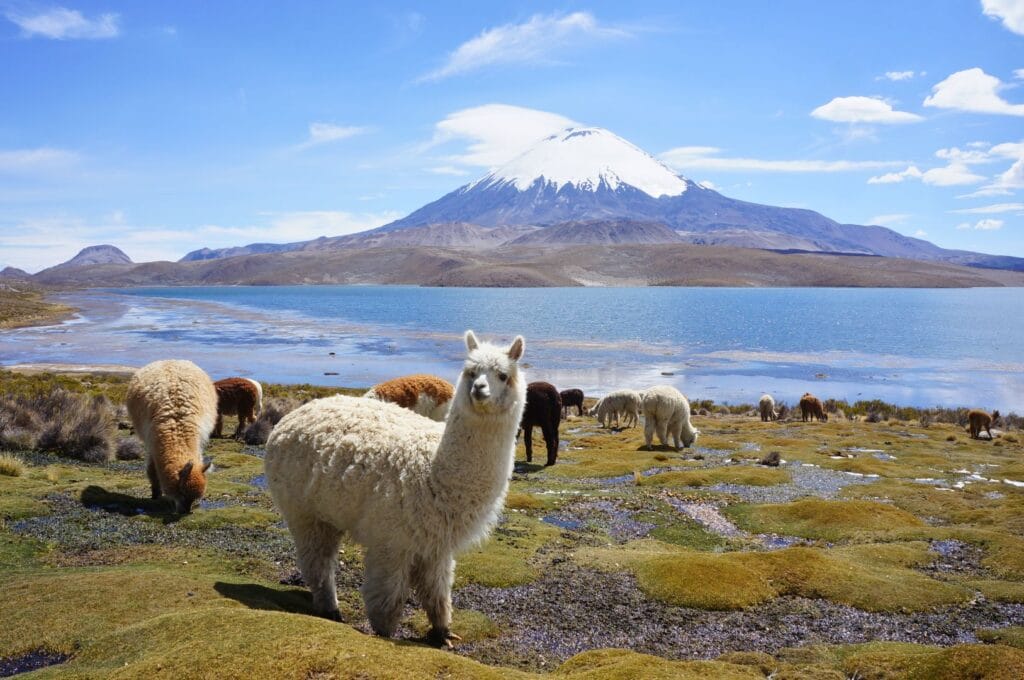
Accommodations around Lauca Park
There are no hotels in Lauca National Park despite the small villages you’ll pass through during your journey. Apparently, there is a hostel/refuge in the villages of Paranicota and Guallatire (Casa de Hospedaje Guallatire), but we couldn’t find information online. So, camping is mandatory if you want to visit the park on your own. You can camp at the refuge by Lake Chungará, near the northwest viewpoint, for 3,000 Chilean pesos.
However, the lake is over 4,500 meters above sea level, and temperatures vary significantly between day and night! We camped there in mid-September, springtime in Chile, and it was -10 °C at night with snow, so suitable gear was essential. If you want to find a hotel, you’ll need to go to the village of Putre, a 1-hour drive from Lake Chungará.
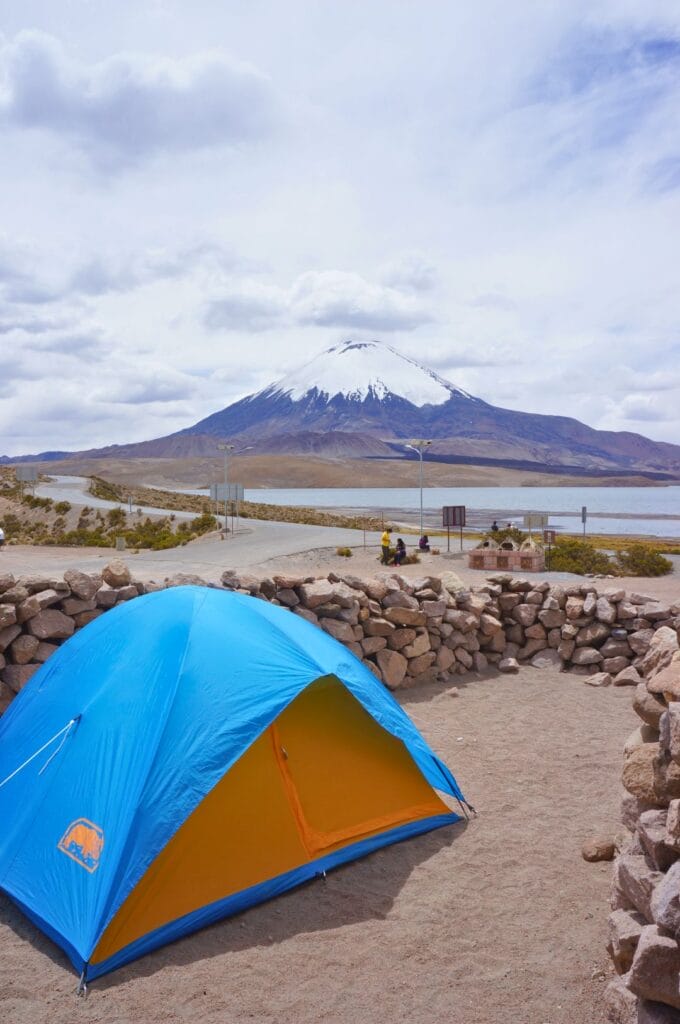
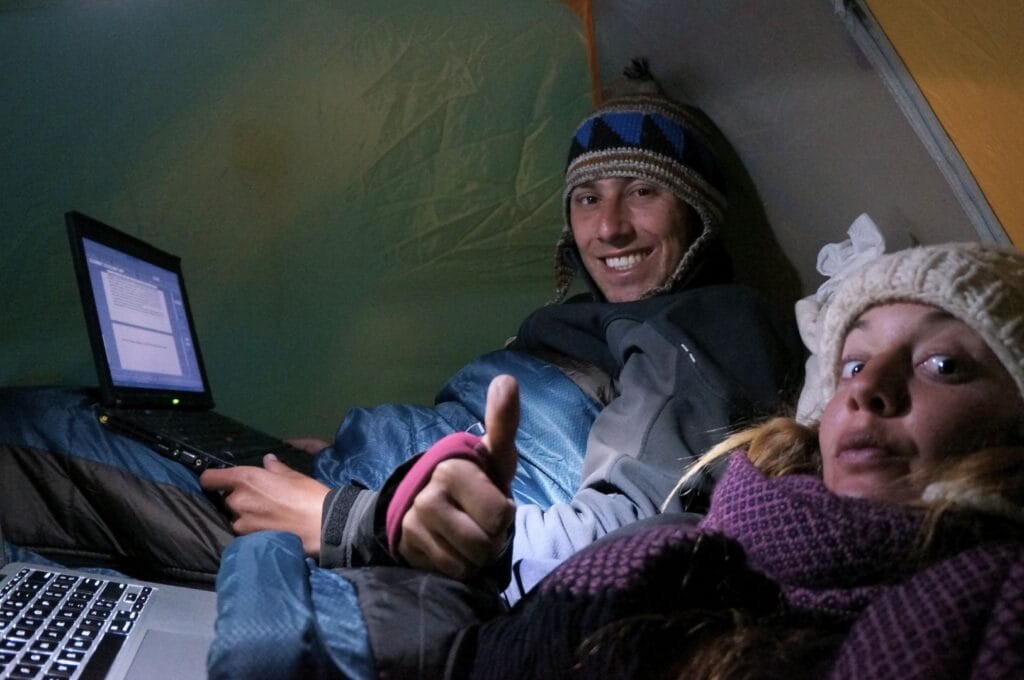
Things to do in Lauca National Park
On the road from Arica, you’ll see peculiar cacti in the Azapa Valley: these are candelabra cacti. Before reaching Putre, make sure to stop at Pukará Copaquilla and the Socoroma viewpoint for a magnificent view of the valley. From Socoroma, you can even see the snow-capped summit of the Taapaca volcano. If you skip the Salar de Surire, you can still enjoy the hot springs at Termas de Jurasi from Putre, as they are 13 km east of the town. Entry costs 4,000 Chilean pesos.
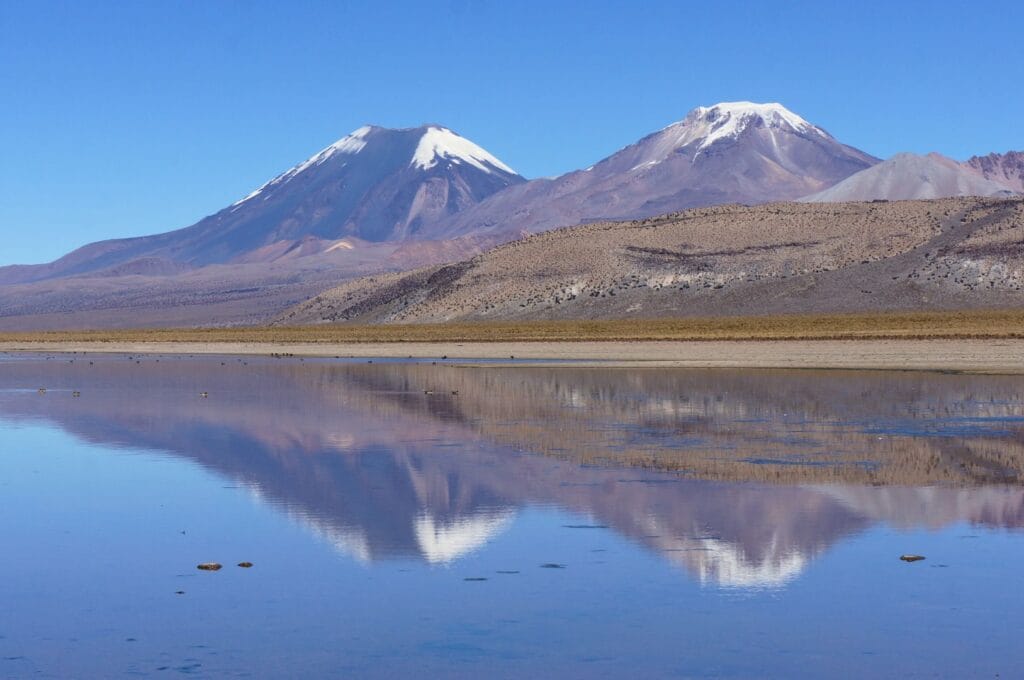
Admire the Scenery at Laguna de Cotacotani and Lake Chungará
Before reaching Lago Chungará, stop at the Cotacotani viewpoint: you’ll get a breathtaking view of Cotacotani Lagoon in its lava field with the snow-capped Parinacota volcano in the background. Along the way, you’ll be delighted to see the hundreds of camelids that have made this region their home. We’ve never seen so many!
Once at Lake Chungará, you’ll see the massive volcano perfectly reflected on the water’s surface. At 4,550 meters above sea level, it’s one of the highest lakes in the world! Visually, it makes a beautiful contrast between the snow, the turquoise lake, and the desert expanses.
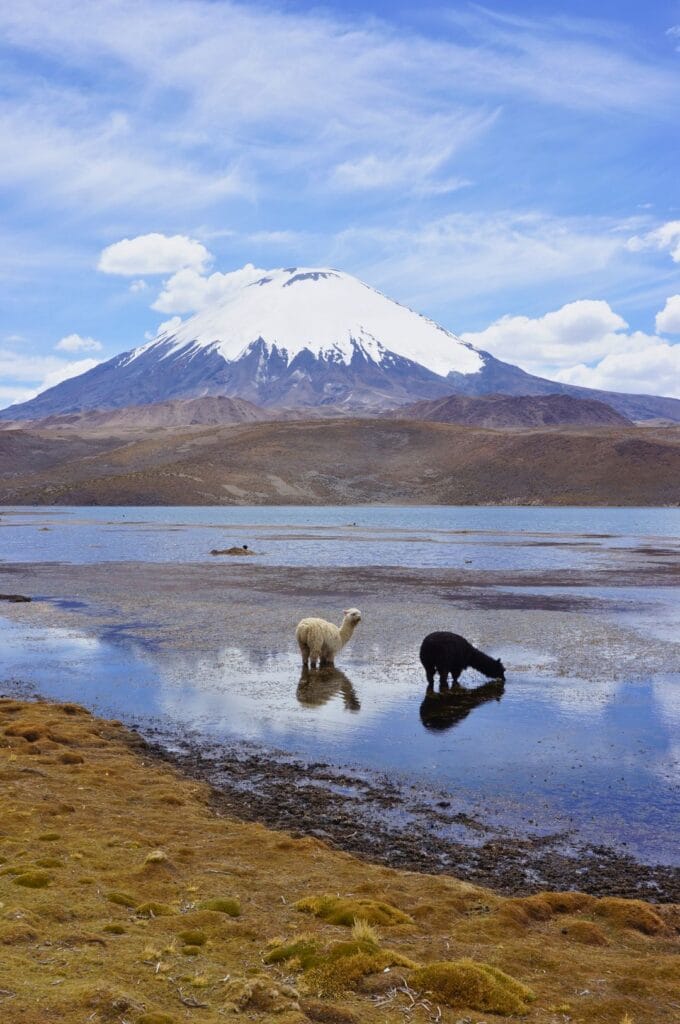
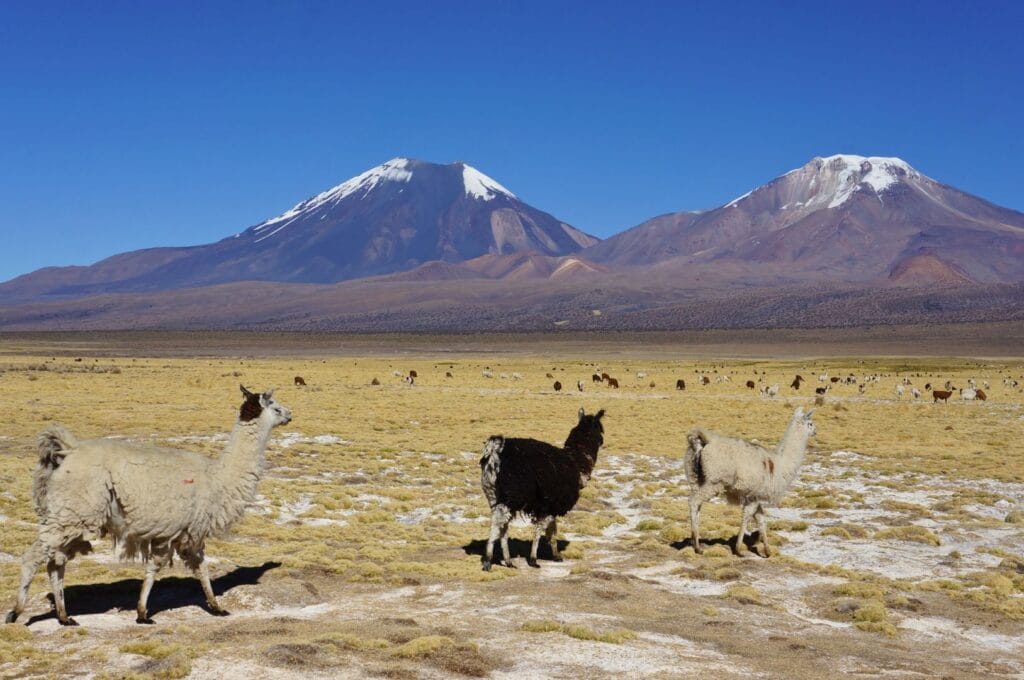
See the smoking Guallatiri volcano
Further southeast, in the Las Vicuñas National Reserve, you’ll find another imposing volcano, Guallatiri, whose summit rises to 6,071 meters. If you observe closely, you’ll see fumaroles escaping from its icy slopes.
Visit the Salar de Surire
Although it is over seven times smaller than its Bolivian neighbor – the Uyuni salt flats – don’t miss the Salar de Surire, especially if the Bolivian salt flats aren’t on your travel itinerary. Here too, flamingos find refuge.
This volcanic environment also offers the opportunity to enjoy the Termas de Polloquere hot springs south of the Salar for a guaranteed escape in this incredible setting. Moreover, these thermal springs are free, and you’ll likely be alone! Some baths are very hot with water around 60 °C, but some are at the ideal temperature to fully enjoy without overheating.
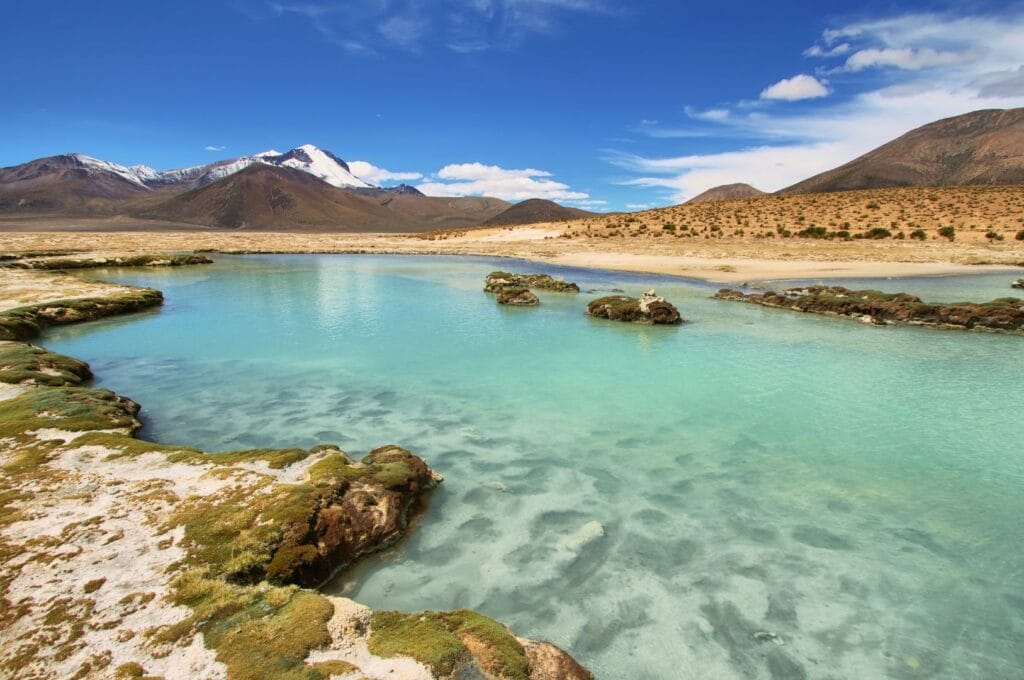
Note: The Salar de Surire is not part of Lauca Park, but the two are often associated. You can take a 1-day tour to the Salar from Putre.
Our review of Sajama and Lauca National Parks
I won’t ramble on for hours. See for yourself why it’s worth spending more than 5 minutes on each side of the border! It’s through this transition between these splendid national parks and the ascent of Parinacota that we beautifully end our journey in Bolivia and begin our Chilean adventure. Do you have other information about Lauca or Sajama parks? Leave us a comment 😉.
Pin it
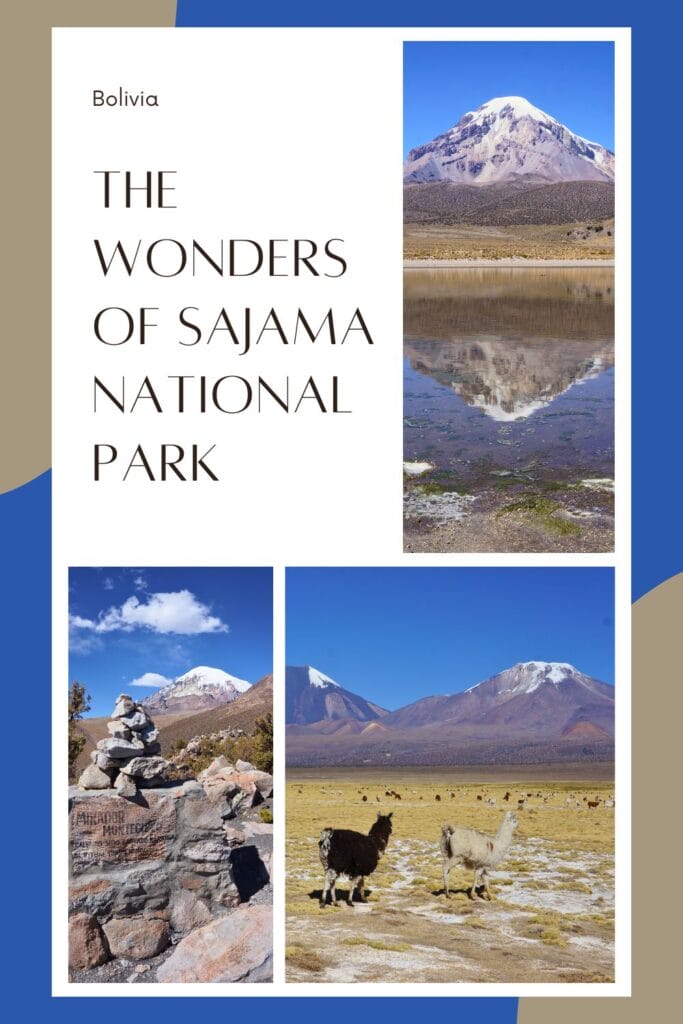
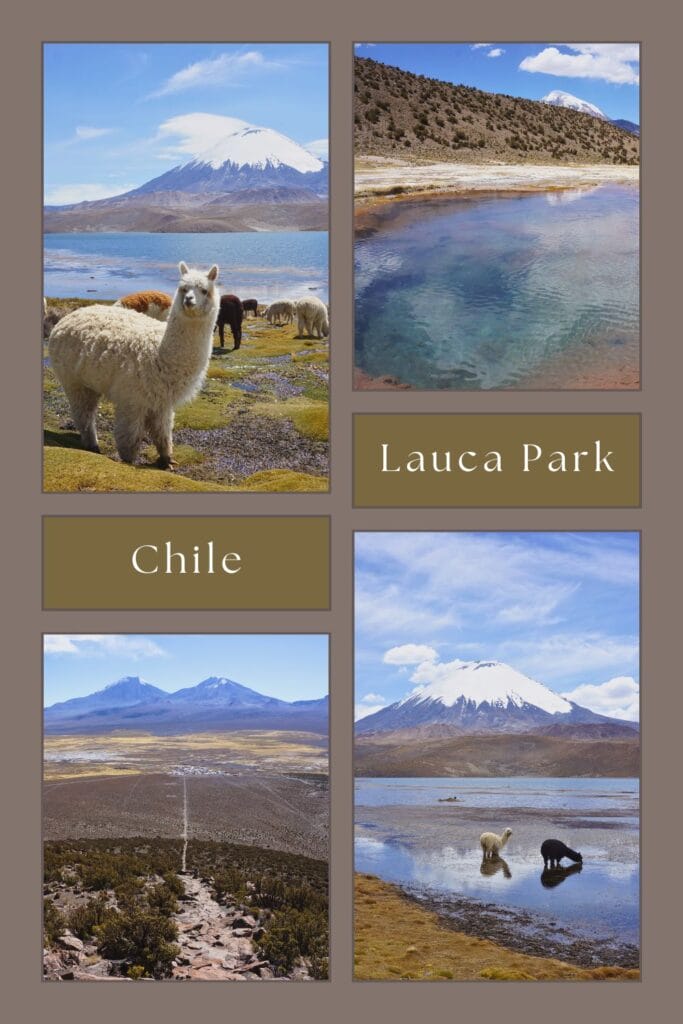
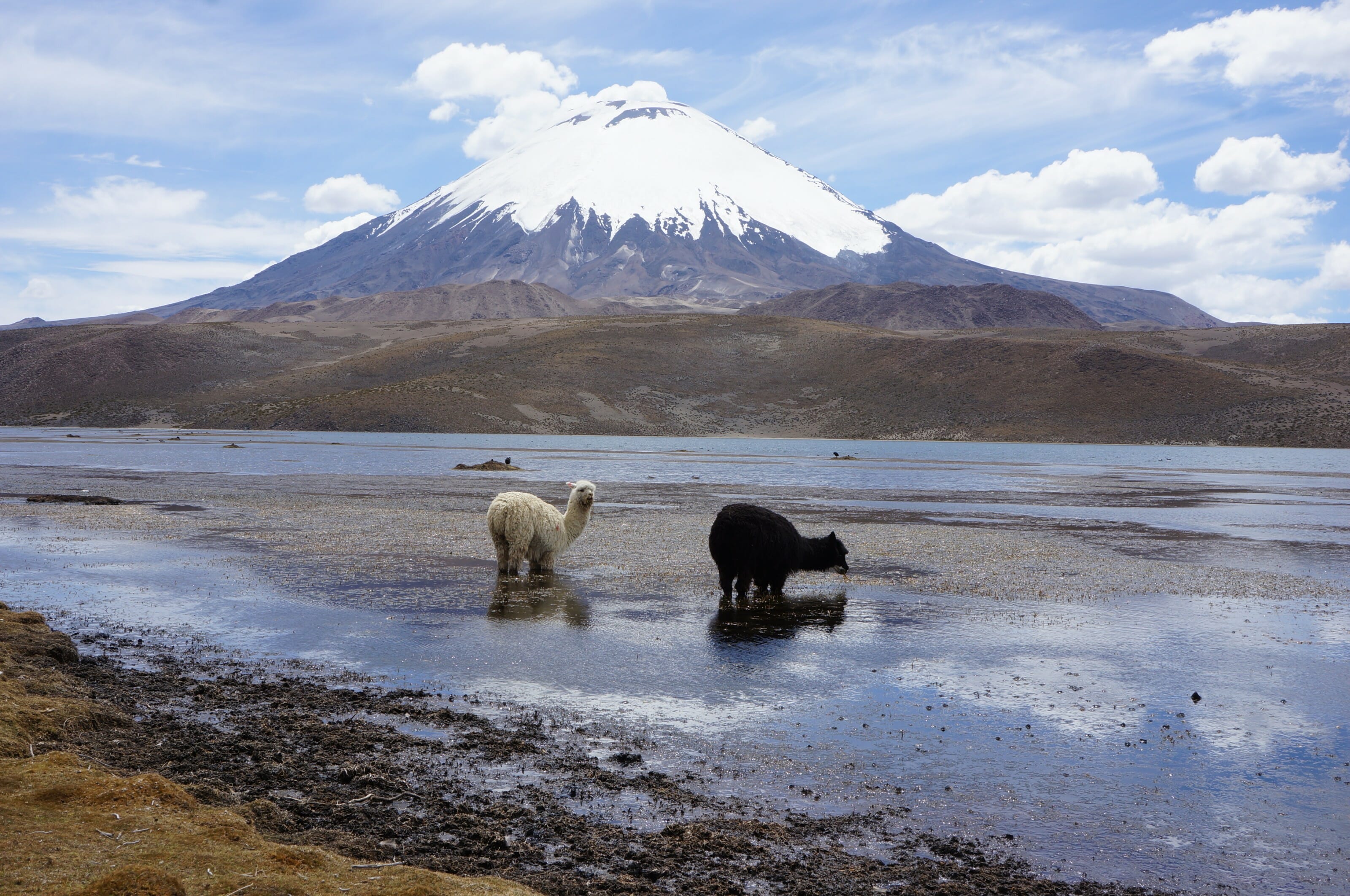
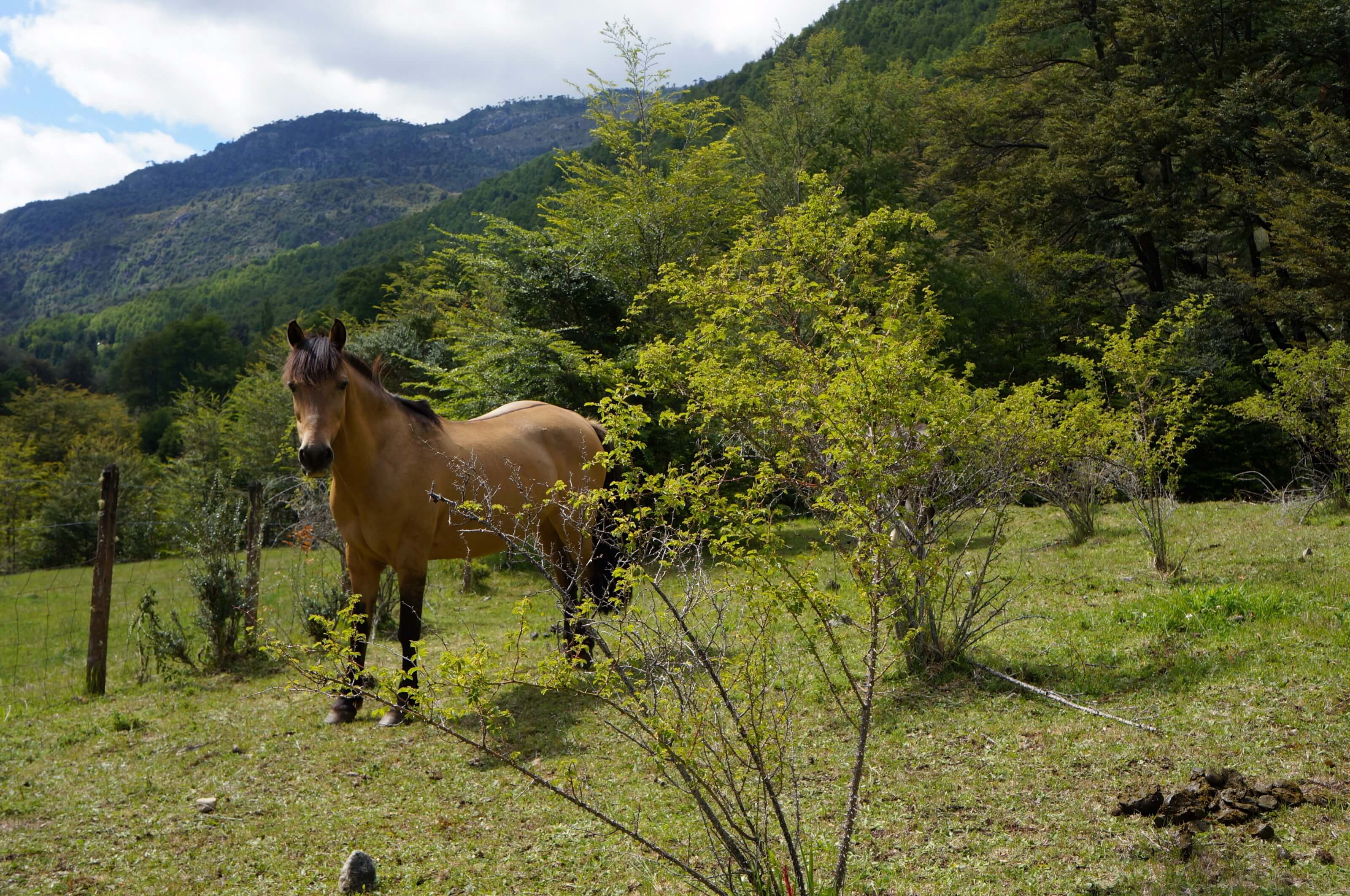
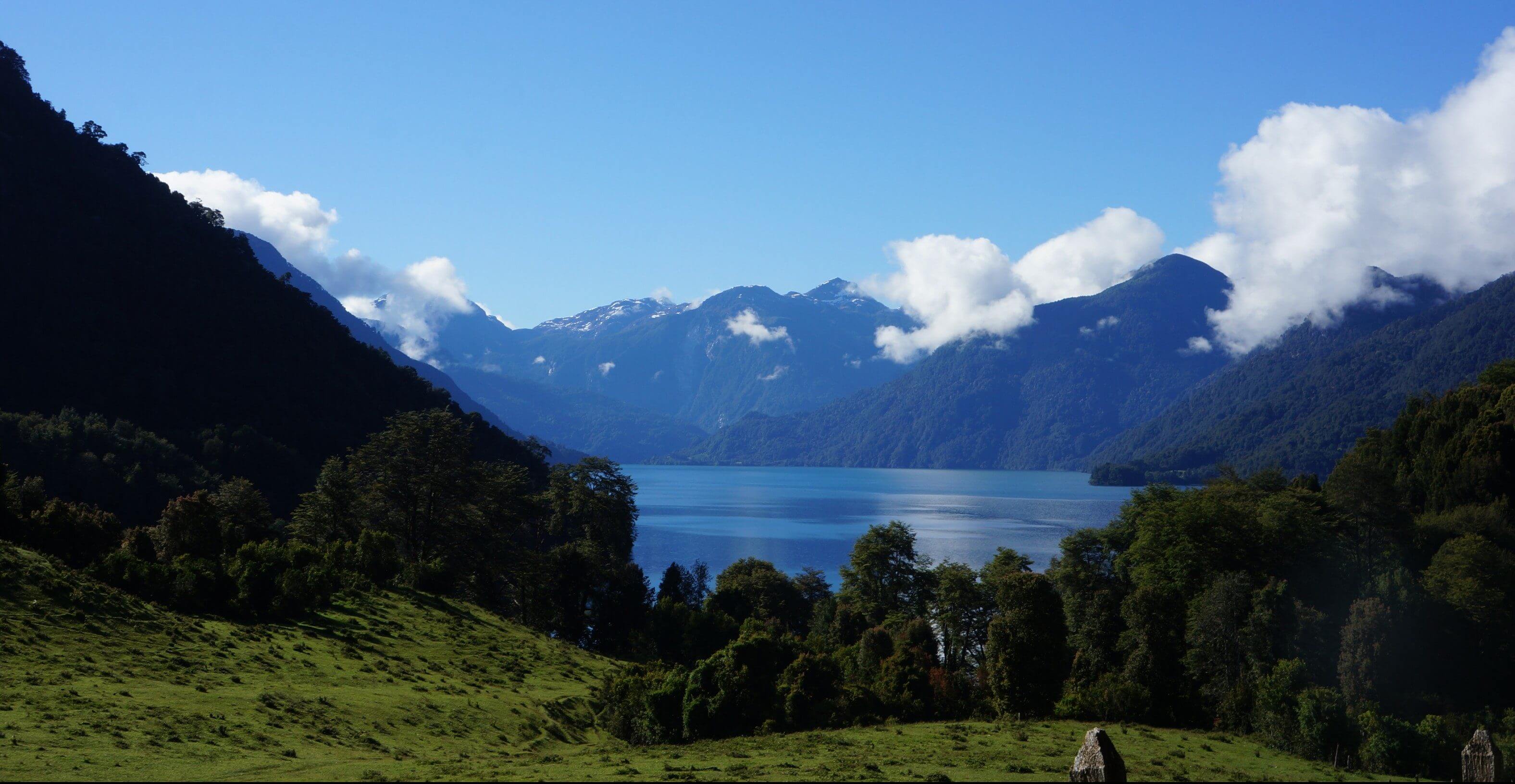
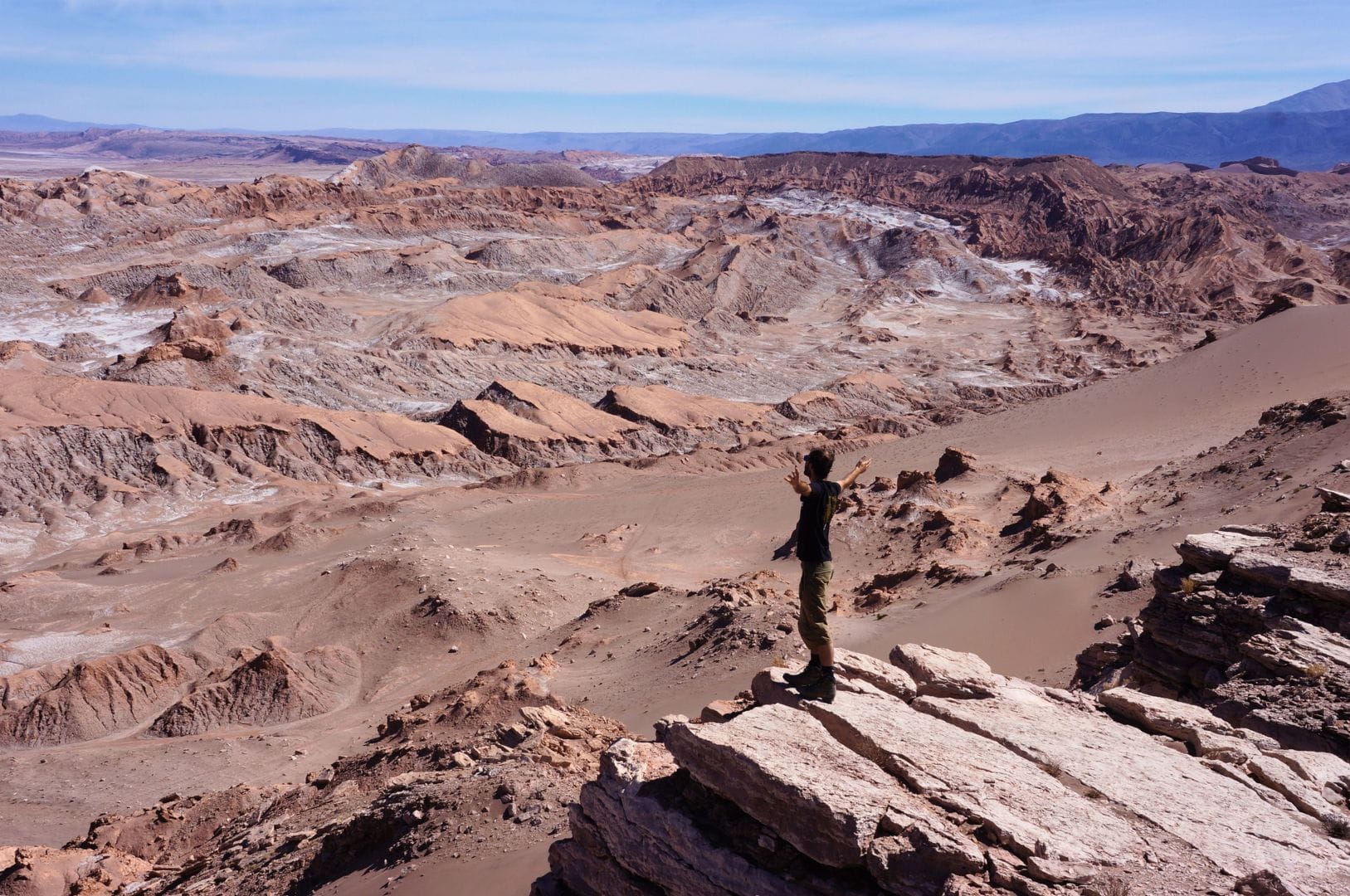
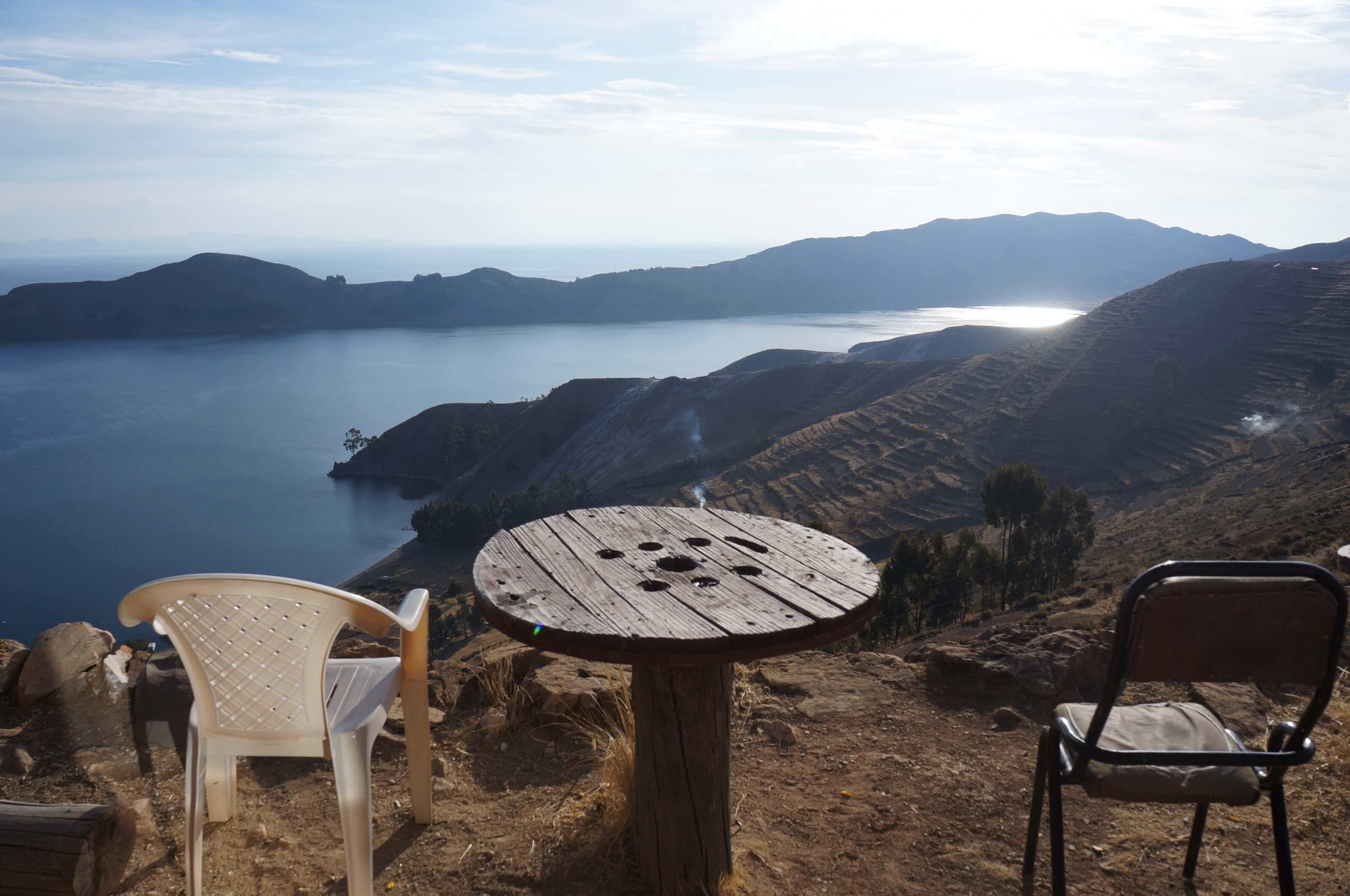
Join the discussion